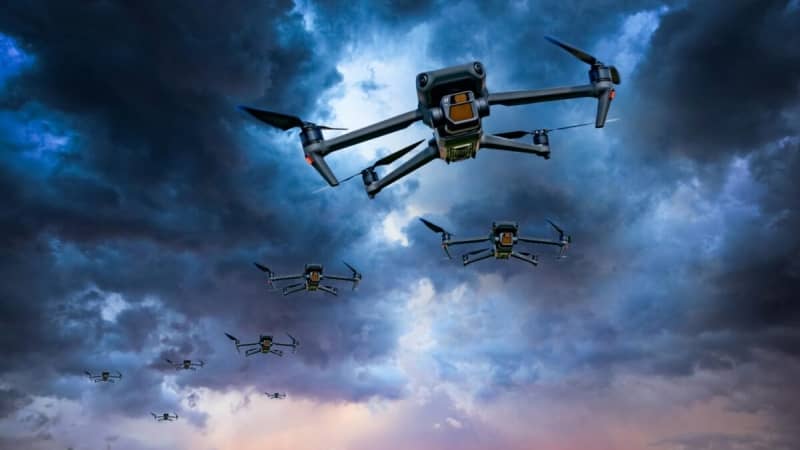
A revolution is taking place high above the battlefield. Autonomous drones, or unmanned aerial vehicles (UAVs), have emerged as game-changers, reshaping strategies and capabilities in conflict zones. These advanced flying machines offer unprecedented levels of surveillance, precision strikes, and operational flexibility, marking a significant shift from traditional warfare tactics.
The development of autonomous drones reflects a broader trend toward incorporating advanced technologies into military operations. With capabilities ranging from real-time intelligence gathering to autonomous targeting, drones are now integral to both strategic and tactical planning. Their ability to perform missions with minimal human intervention is transforming how military forces approach and execute operations.
As we explore the rise of autonomous drones, we’ll examine their impact on modern warfare, the technological advancements driving their development, and the implications for future military engagements.
The Capabilities of Autonomous Drones in Combat
Autonomous drones have redefined the landscape of modern warfare with their diverse capabilities. One of their primary roles is reconnaissance and surveillance. Equipped with high-resolution cameras and sensors, these drones can provide real-time intelligence on enemy positions, movements, and infrastructure. This capability allows military forces to make informed decisions and adapt strategies rapidly.
Another significant advantage of autonomous drones is their precision strike capability. Modern drones are capable of carrying and deploying various types of munitions with remarkable accuracy. This precision reduces collateral damage and increases the effectiveness of targeted strikes. Drones can engage high-value targets while minimizing the risk to friendly forces and civilian populations.
The flexibility of autonomous drones also extends to their operational use. They can be deployed for a range of missions, from tactical support to long-range strategic operations. Whether conducting surveillance, delivering supplies, or engaging in combat, drones offer a versatile and adaptable platform that enhances military effectiveness across different scenarios.
Technological Advancements Driving Drone Innovation
The rapid evolution of autonomous drones is driven by several key technological advancements. One crucial area is artificial intelligence (AI) and machine learning. AI enables drones to analyze data, make decisions, and execute complex tasks with minimal human input. This capability enhances their ability to operate autonomously in dynamic and unpredictable environments.
Advancements in drone propulsion and energy systems are also contributing to their improved performance. Modern drones are equipped with advanced propulsion technologies that extend their operational range and endurance. Additionally, innovations in battery and power management systems allow drones to remain airborne for longer periods, supporting extended missions.
The integration of advanced communication systems is another critical factor. Secure and reliable communication channels enable drones to relay information in real-time and receive commands from operators. Enhanced communication capabilities ensure that drones can operate effectively in complex and contested environments, maintaining their role as essential assets in modern warfare.
The Future of Autonomous Drones in Warfare
As autonomous drone technology continues to advance, its future applications in warfare are likely to expand. Emerging trends include the development of swarming technology, where multiple drones operate collaboratively to achieve strategic objectives. Swarms of drones can overwhelm defenses, conduct large-scale surveillance, and perform coordinated attacks, offering new tactical advantages.
The potential for autonomous drones to integrate with other advanced technologies is also on the horizon. For example, combining drones with satellite systems, cyber capabilities, and advanced data analytics could create a highly sophisticated and interconnected network of surveillance and strike assets. This integration would enhance the ability to gather intelligence, coordinate operations, and respond to threats effectively.
However, the rise of autonomous drones also raises important considerations for the future. Issues such as the ethical use of drones in combat, the potential for misuse, and the need for international regulations will need to be addressed. As drone technology continues to evolve, ensuring responsible use and maintaining oversight will be crucial in managing the impact of these powerful tools on global security.
The rapid technological progression of autonomous drones represents a profound shift in modern warfare, offering enhanced capabilities and strategic advantages. As technology progresses, these aerial systems will likely play an increasingly prominent role in military operations, shaping the future of conflict and defense strategies. The rise of autonomous drones is a testament to the rapid advancements in military technology and its transformative impact on how wars are fought.

